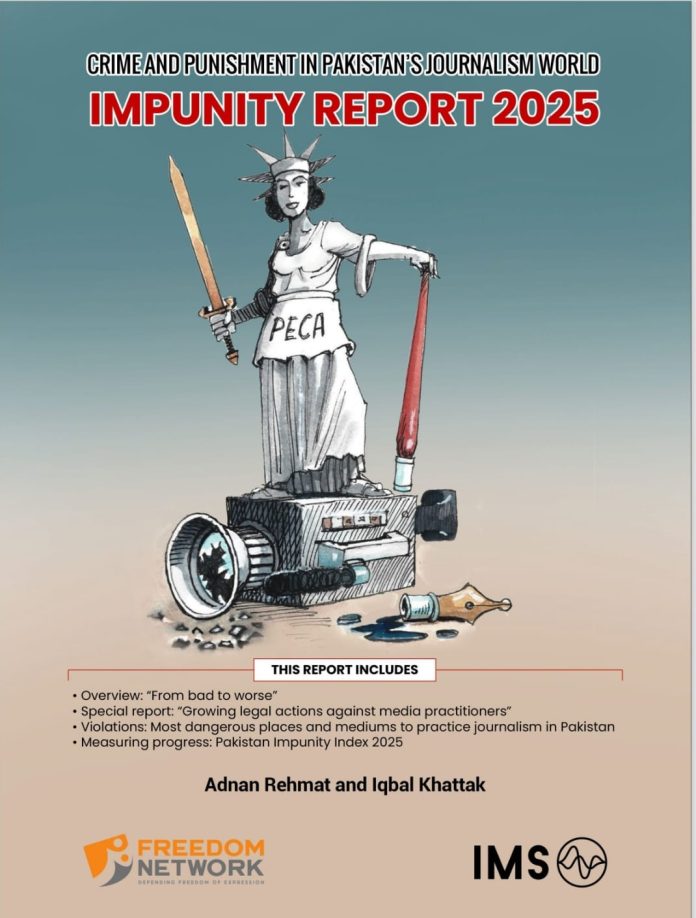By Ashrafuddin Pirzada
PESHAWAR: On the eve of the International Day to End Impunity for crimes against journalists, the World Impunity Report 2025 released by Freedom Network(FN) revealed that at least five journalists were killed and 104 others faced different forms of violence, threats and legal harassment across Pakistan between November 2024 and September 2025.
Talking to The News Freedom Network Executive Director, Iqbal Khattak, said that journalists continue to face increasing pressure from both state and non-state actors, while impunity for crimes against media professionals remains alarmingly high. He said the report documented five killings, including four male and one female journalist, while more than a hundred other cases of intimidation, abduction, physical assault, arbitrary detention and digital harassment during the last 11-month period were reported.
Freedom Network, in its report, explained that the attacks were most frequently reported from Khyber Pakhtunkhwa, Sindh and Punjab, while Islamabad remained a hotspot for legal harassment and surveillance of journalists. The tribal districts of Khyber Pakhtunkhwa, particularly the former FATA region, witnessed several cases of intimidation by militant groups and local authorities. Journalists in Khyber district were reporting in a severe, threatening situation where a senior journalist, Khalil Jibran Afridi, was gunned down in Landikotal while several other journalists reported life threats because of their work, a local journalist told Fata voice. He said two senior journalists have left their hometown and gone underground due to severe threats from state and non-state actors.
Iqbal Khattak said the main perpetrators behind these attacks included state officials, political groups, militant organizations and criminal elements.
“Most of the victims are targeted for exposing corruption, militancy and human rights violations,” he said. Adding those journalists covering sensitive topics in conflict zones, including District Khyber, continued to work under constant threat to their safety.
The Freedom Network also highlighted growing misuse of the Pakistan Electronic Crimes Act (PECA), under which journalists and digital media activists were booked or investigated for online expression. The report warned that new amendments to the law have further expanded the powers of regulatory bodies to block content and initiate criminal proceedings, threatening the independence of the media.
“Journalists in Pakistan are working under unprecedented pressure.” The misuse of cybercrime laws and the absence of accountability for attacks on journalists have created a climate of fear and self-censorship. The impunity encourages more violence,” said Freedom Network Executive Director Iqbal Khattak.
The report underlined that Pakistan remained among the world’s most dangerous countries for journalists. Since 2012, more than fifty journalists have been murdered, yet only a few cases have seen partial convictions, while most of the killers and masterminds remain at large.
Freedom Network warned that this continuing impunity emboldens perpetrators and weakens public trust in justice institutions.
Iqbal Khattak urged the government to strengthen the federal and provincial journalist safety commissions, fully implement journalist protection laws and ensure effective coordination between law enforcement agencies and media organizations to prevent further violence. He also called for the restoration of the commission for the protection of journalists and media professionals to investigate cases of violence and intimidation against media workers.
He said that without genuine political will, legislative reform and institutional accountability, the state of press freedom in Pakistan would continue to deteriorate.
It emphasized in the Freedom Network report that ensuring justice for murdered and threatened journalists was essential for restoring confidence in democratic values and protecting the right to free expression.











